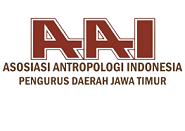Guide for Authors Online Submission Privacy Statement Manuscript Template Cover Letter and CTA Template
Submissions
Submission Preparation Checklist
As part of the submission process, authors are required to check off their submission's compliance with all of the following items, and submissions may be returned to authors that do not adhere to these guidelines.- The submission has not been previously published or submitted to another journal for consideration (unless an explanation is provided in the Comments to the Editor).
- When submitting an original research manuscript, please upload the Ethical Clearance of your research as a supplementary file, separated from the manuscript file.
- Complete the Cover Letter and Copyright Transfer Agreement (as supplementary files in the PDF version) and include them in the submit files section, separated from the manuscript file.
- The manuscript file is in OpenOffice, Microsoft Word, RTF, or WordPerfect document file format.
- The text adheres to the stylistic and bibliographic requirements outlined in the Author Guidelines, which is found in the About the Journal.
- Where available, URLs for the references have been provided.
- When submitting, please remember that Ensuring a Blind Review have been adhered to.
Copyright Notice
All articles submitted by the author and published in the Indonesian Journal of Social Sciences are fully copyrighted by the publication of the Indonesian Journal of Social Sciences. Authors who publish with the Indonesian Journal of Social Sciences agree to the following terms:
-
The authors agree to transfer the transfer copyright of the article to the Indonesian Journal of Social Sciences effective if and when the paper is accepted for publication. The authors can download the Copyright Transfer Agreement here.
-
The legal formal aspect of journal publication accessibility refers to Creative Commons Attribution-NonCommercial-ShareAlike 4.0 International License (CC BY-NC-SA).
-
Every publication (printed/electronic) is open access for educational purposes, research, and library. Other than the aims mentioned above, the editorial board is not responsible for copyright violation.
IJSS by Unair is licensed under a Creative Commons Attribution-NonCommercial-ShareAlike 4.0 International License.





















